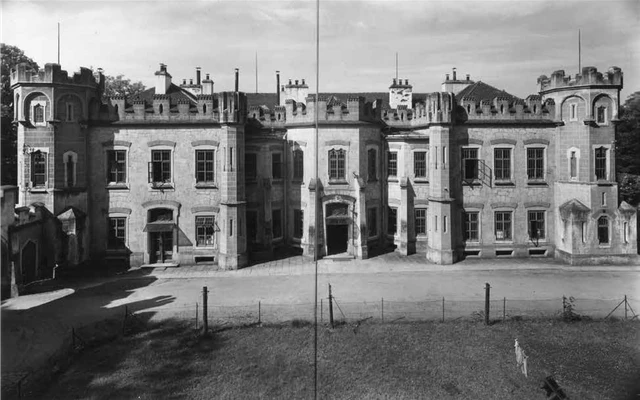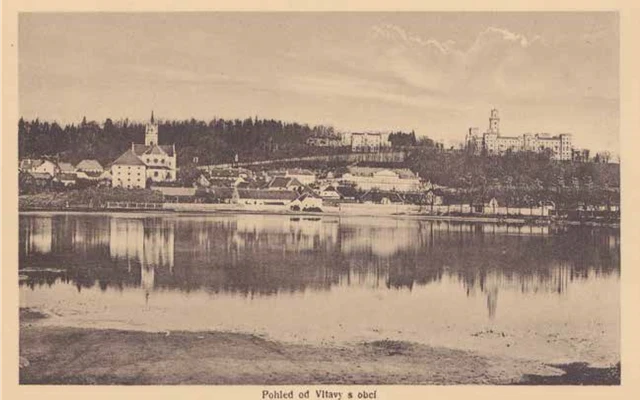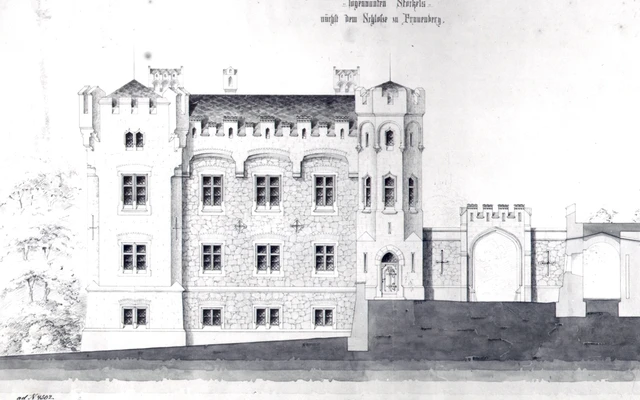A walk through the history of today's Hotel Štekl
A walk through the history of today's Hotel Štekl, the former residence of Schwarzenberg officials
Bc. Ivana Troupová
The rocky promontory above the Vltava River impresses with its location in the České Budějovice Basin. From the dam of the Munický Pond we can see the historic building of the Hluboká Chateau, together with the building where the apartments for the officials were, the so-called Stöckl (the current Hotel Štekl). They are spread out among the trees of the chateau park, which completes the fairy-tale illusion of a chateau building. The romantic building, integrated into the South Bohemian landscape, was built by Prince Jan Adolf II of Schwarzenberg (1799-1888), who was called the "King of South Bohemia". Together with his wife, Princess Eleonora née Princess of Liechtenstein (1812-1873), they left a picturesque architectural feature dominating the surrounding landscape for future generations. The predecessor of today's castle was a medieval castle from the middle of the 13th century, which was owned by the Czech kings. The royal property was often pawned and therefore several noble families took possession of it. In 1562 it was acquired by the Lords of Jindřichův Hradec, who had it converted into a Renaissance mansion. Further building modifications followed at the beginning of the 18th century in the Baroque style, when from 1661 the Schwarzenbergs took possession of the Hluboka estate. Count Jan Adolf I of Schwarzenberg obtained the Bohemian incollature in 1658, was classified among the landed gentry, and was thus able to acquire landed property in the territory of the Bohemian Kingdom. When in 1833, after the death of his father Prince Joseph Jan, he took over the administration of the family estate, Jan Adolf II was one of the most important aristocrats of his time. The fate of 230,000 subjects in Bohemia, Austria and Bavaria depended on his decisions. A contemporary description by the French Marshal Marmont Auguste, Duke of Ragusa, who visited the Crown Lands in 1837, refers to the size of the Schwarzenberg estate as "gigantesques, grandes" (huge, great).
While still a crown prince (Erbprinz) he received a thorough and comprehensive education, which, in addition to logic, psychology, mathematics, history, law, accounting, business, forestry and civics, included the study of aesthetics and 'Baukunst' (building arts). The painter Ferdinand Runk taught the little prince and his siblings art subjects. Other skills included the study of the languages French, English, Italian and Czech. The further development of the young Prince John Adolph II was influenced by study trips. He made cavalry journeys to France in 1819 and to Italy in 1822 and 1825. The trip in 1825 to Great Britain, the most developed country in Europe at that time, had the greatest influence on him. In 1830 he married the charming Princess Eleanor, with whom he made a further trip to Great Britain in 1838 as a Privy Councillor to the Emperor of Austria on an honorary diplomatic mission on the occasion of the coronation of Queen Victoria. The climax was a party at Carlton House, Richmond, given by the Prince on 24 July for 700 persons. Already during his first trip, apart from the manners of the household or a visit to the British Museum, the Prince was impressed by the manor houses. He continued to discover the beauties of British architecture on his second trip with his wife Eleanor. During his second trip, he was accompanied by the building director Wilhem Neverhorst. The decision to bring "a piece of England" to southern Bohemia, specifically to Hluboká, was made in the autumn of 1839. The original Baroque castle was radically rebuilt. The surrounding buildings of the former Baroque castle were gradually demolished. The wish of Prince Jan Adolf II was to create a harmonious whole, including the newly built buildings in the castle grounds.
The main builder and architect was Franz Beer, who designed a new building for the relocated offices, a church building and a riding hall next to the castle. Gradually, the building of the official house was put into operation in 1846, and in 1847 the church was consecrated by the brother of the reigning prince, Cardinal Bedřich of Schwarzenberg. The riding hall building could already be connected to the castle building in 1848. Work in the castle continued at the end of the 1950s. The actual construction was completed with the laying of the final stone in the so-called Rudolf's Corridor in the 2nd courtyard of the castle. The name of the builder of the current Hotel Stekla, the trainee Damasio Deworezky, appears in the Prince's decree of 18 October 1842. At that time, the work of the building director Newerhorst ended for health reasons and the construction of the castle was fully taken over by Franz Beer. The trainee Deworezky is finally assigned to the building office with a per diem of 2 gold Vienna currency per day and 6 fathoms of soft two-and-a-half-foot firewood. In November 1858, Prince Damasio entrusts Deworezky with the management of the work at Hluboká as chief construction apprentice. He was the main assistant of Princess Eleonora in the final realization of the appearance of the castle interiors. In October 1861, the Prince ordered the demolition of the old Stekl and the construction of a new building for the officials' apartments. Damasius Deworezky submitted two design options to the Prince. According to the chosen project, the new Stekl building was constructed in 1862-1863, and the other buildings belonging to the Stekl, including the new stables, were built by 1865. The plans also mention a kennel. During World War II, the Schwarzenberg estate was placed under the so-called Nazi forced administration, and the last owner, Prince Dr. Adolf (1890-1950), emigrated overseas at the end of 1939 to escape the Nazis. The castle guest book of 27 October 1940 records that his cousin Prince Josef Schwarzenberg stayed in a room in Stöckl. In 1947, as a result of the political events of the time, all the property of the Hluboka-Krumlov primogeniture was transferred to the Czechoslovak state by a special law, the Lex Schwarzenberg. The Stöckl building was handed over to the Czechoslovak State Forests. In 1951, an inventory book was drawn up listing items from the laundry and laundry storage. The cliché of the time refers to former Schwarzenberg employees as Comrade Dvorská and Comrade Kabourek. The building is currently used as a hotel. The Hotel Štekl was the location for the 1999 Czech 13-part series Hotel Herbich, directed by Hynek Bočan and written by Petr Zikmund. In March 2009, some of the participants of a two-day informal meeting of the foreign ministers of the 27 member states of the European Union were accommodated in the current Hotel Štekl.





